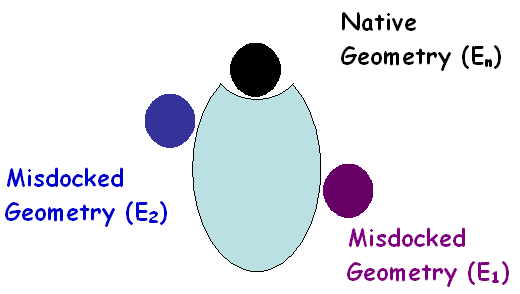|
|
Obtaining constraints on the Energy function
< E1 => E1 - En > 0 => DE1 > 0 2) E n < E2 => E2 - En > 0 => DE2 > 0
The basic requirement from an energy function is, that the free energy of native complex will be lower than that of any misdocked geometry, for the same pair of proteins. Thus misdocked complexes show how the energy function should not look like. This information can be extracted in the form of constraints (inequalities) on the energy function:
optimization of linear energy functions
The choice of a linear form for the energy function enable us to efficiently optimize the parameters, such that, the energy of the native state will be lower than that of every non native state. Each inequality divides the parameter space into two regions (A): allowed (each point in the space represent a valid solution) and forbidden. A given inequality may give rise to three outcomes: It may (B) reduce the space allowed for the parameter set (most desirable), have no effect on the allowed space (C), or impose an impossible condition (no solution exist) (D). Optimization was done using the interior point algorithm BPMPD
|


